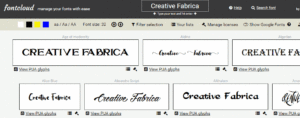The idea of using personas to shape design decisions for a web site is nothing new.
Personas represent visitors to your site; that is, they’re fictitious visitors. Each persona has a name, photo, and bio that includes details such as where they live, work, or study, what is important to them, and what motivates them. The team involved in building the site gets to know these so-called individuals like their best friends. Then, when a design decision needs to be made, the team can ask, “What would Julie do?” or “How would this affect Frank?”
Personas achieve a couple of goals in the design process:
- They provide everyone on the team with a common baseline upon which to discuss how visitors to the site might be impacted.
- They give the design team empathy with the site audience. By referring to personas as real people, the intention is that the team will identify with each visitor and provide a design solution that satisfies as many users as possible.
Creating Personas for Your Site
The process I use for creating personas combines two approaches, and I’m indebted to the two authors behind them for providing such a great starting point. There are many differing opinions on the best approach to creating personas for your site, but the one I’ve taken here is what makes the most sense to me.
The personas I create were based on the following two articles:
- Building A Data-backed Persona by Andrea Wiggins, boxesandarrows.com
- Getting Started with Building Personas by Howard Kaplan, FutureNow Inc. (PDF, 4.8MB)
The basic steps I follow are described below. Hopefully you’ll find them useful in creating your own personas.
- Decide on the number of personas that you’ll create. The number you settle on might change throughout the process as you examine your analytics data more closely, but you probably already have an idea of how many types of visitors can be identified. Some experts suggest that four or five is plenty.
- Analyze the distribution of various visitor traits captured in your site’s anonymous analytics data over a 30-day period—which city and country people live in, what browser and operating systems are most used, which parts of the site are most frequented, which external sites give the most referrals, which phrases form the most common queries that lead search engine visitors to us, and what the breakdown of new and returning visitors is like. I distribute the top results in each of these categories across five rows in a spreadsheet, and when combined, this data forms my five personas.
- Distribute common traits that appear in your analytics data—for example, if 60% of your visitors are in the US, three of your five personas are Americans. However, there may be some traits that you want to include for business reasons even though they’re not heavily represented in your site data. For example, your organization might be committed to accommodating users with special accessibility needs, even though these users don’t represent a significant portion of your customer base (yet). So to ensure you “walk the walk”, it might make sense to represent users with a disability in your personas, even if they are in a minority.
- Once these foundations are in place, add any additional data that you might have from other sources. For example, you might have run customer surveys in the past. With the results of these surveys, you might be able to deduce which of the personas that are emerging would be most likely to exhibit particular behavior on your site—subscribing to newsletters or RSS feeds, following your organization on social media, or making sales inquiry, for example.
- Overlaying these two disparate data sets is likely to be an arbitrary process, but that’s okay. I usually find that by folding in this extra data, my personas really start to take shape. With this foundation, I can then infer certain tasks that my new team of representative users might be doing when they visit the site, such as looking for help, signing up to a newsletter, or asking a question in the comments. These tasks formed my users’ goals.
- This next step will be important if your site contains an ecommerce aspect (if you’re not selling products on your site, you may want to skip it). Distribute the four buying behaviors, as described in Howard Kaplan’s article–Competitive, Humanistic, Methodical, and Spontaneous—across your personas. While I don’t necessarily buy into the whole “Persuasion Architecture” concept (it’s a trademarked term) used by Kaplan and the FutureNow team in their consulting practice, I certainly believe that different people make buying decisions differently, and the descriptions of these four purchasing types resonated with me. Of course, you may have no way of knowing what the distribution of each of these personality types will be across your visitors—I usually just created an even number of each across my personas.
- Finally, round out each of your personas with interesting pieces of information to give them a proper backstory and a real personality. Each persona should be given a descriptive title; for example, “the soccer mom” or “the enthusiastic student.” This was the part of the exercise that was most like creative writing, and involved a bit of shuffling of buying behavior types in order to match the personalities that had emerged. Give your personas a face—remember to use images for which you own the copyright if anyone other than yourself is going to be looking at them—and give them believable names that fit their backstory. I give my personas names selected from the Random Name Generator, purchase some images from iStockPhoto, and my personas are complete.
The end result is a suite of personas that I can keep front-of-mind when making any design decisions now, and in future, as I work on the site. Obviously, the personas may need to evolve over time as the site’s audience develops, but you can see how handy accurate personas can be in helping you picture the people you’re creating a site for.
What about you? Have you ever created audience personas? What advice can you add?
 Matthew Magain
Matthew MagainMatthew Magain is a UX designer with over 15 years of experience creating exceptional digital experiences for companies such as IBM, Australia Post, and sitepoint.com. He is currently the Chief Doodler at Sketch Group, Co-founder of UX Mastery, and recently co-authored Everyday UX, an inspiring collection of interviews with some of the best UX Designers in the world. Matthew is also the creator of Charlie Weatherburn and the Flying Machine.







